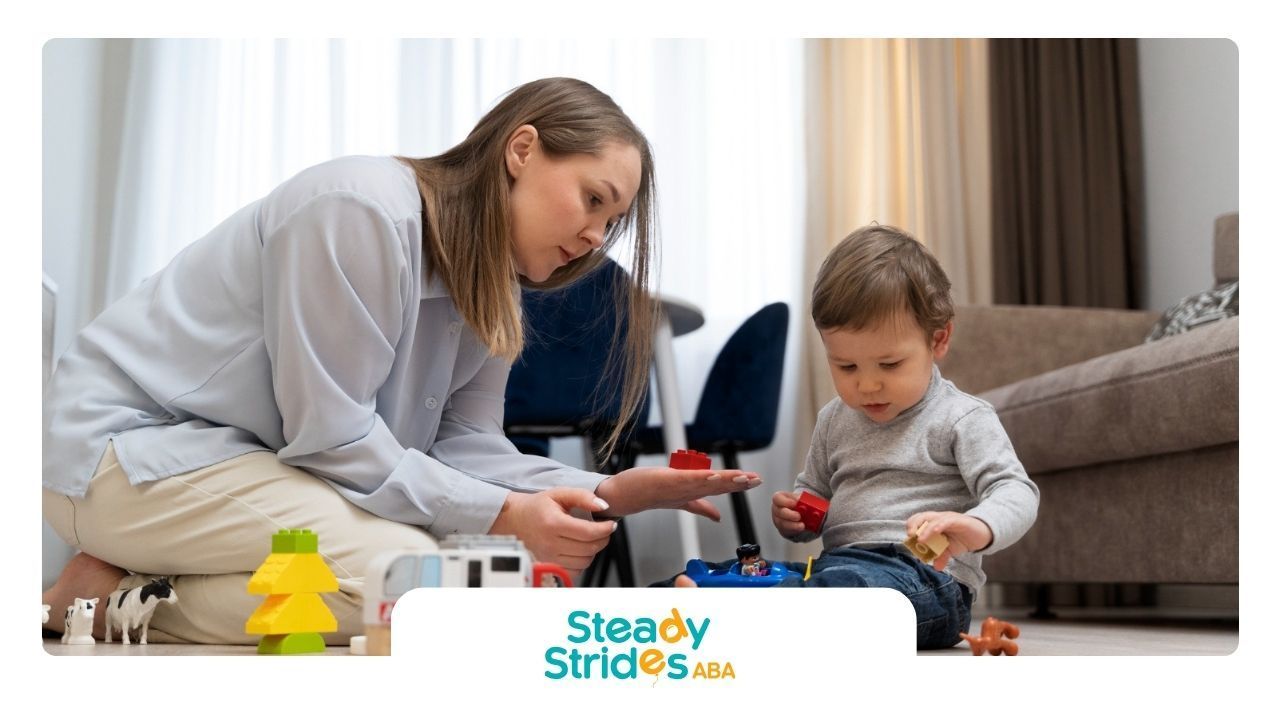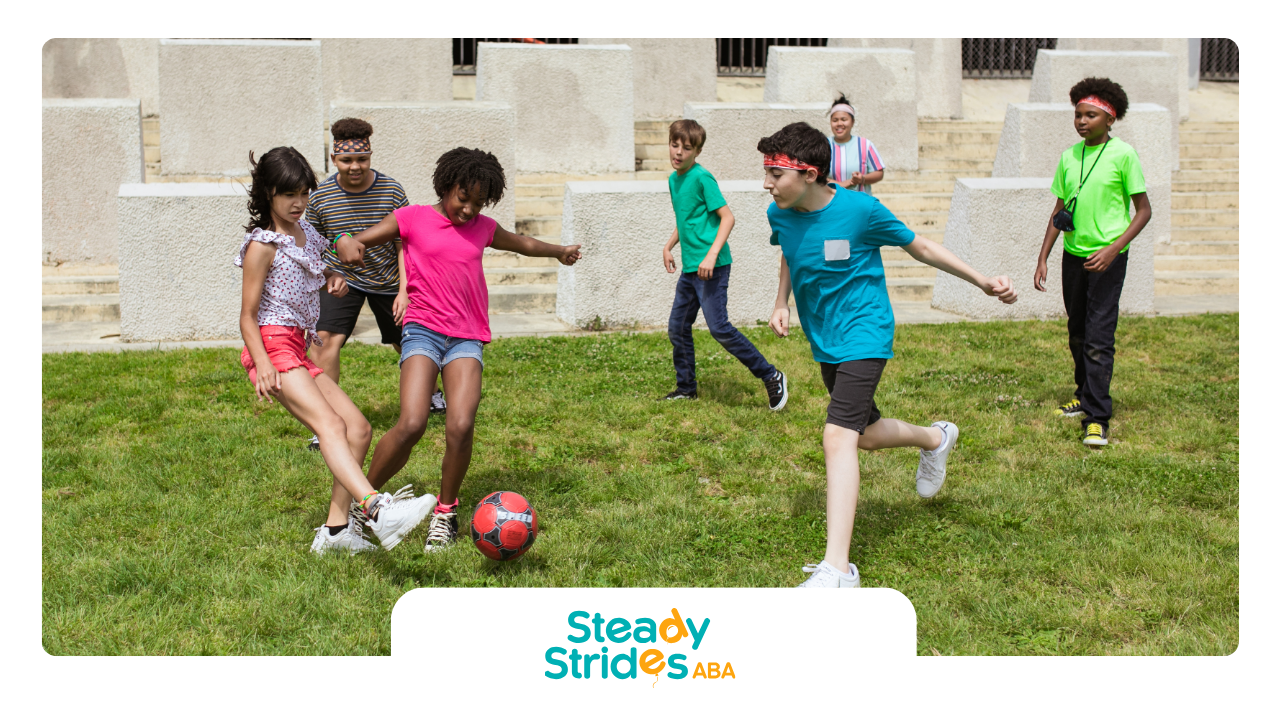Understanding Autistic Shutdowns
Trying to get your head around autistic shutdowns? It’s like peeling an onion—layer by layer, but it makes you cry less. These shutdowns stand apart from more noticeable reactions like meltdowns. It’s a different way of saying, "Enough is enough, I need some space."
Definition and Characteristics
Picture someone feeling so overwhelmed that they hit the pause button on the world. That’s what autistic shutdowns are all about. When this happens, people might seem like they’re checking out of reality to avoid stress overload. During a shutdown, it might look like they've disappeared into their own bubble. Unresponsive? Check. Skills on hiatus? You bet. It's a timeout that lets them deal with the inner chaos and eventually feel normal again. It's like closing your eyes to a bright light— a natural reflex to improve comfort.
Often, these shutdowns look like the person just isn’t interested. But if you know what to look for, you'd see it's not about checking out—it's a deeper coping strategy needing understanding, not judgment.
| Characteristic | Description |
|---|---|
| Withdrawal | Retreat from everything—people, noise—the lot. |
| Unresponsiveness | Not acknowledging the world’s attempts to connect. |
| Skill Loss | Like skills went on a coffee break. |
| Numbness | Feeling like life's a bit out of focus. |
Triggers for Shutdowns
Lots of things can flip the shutdown switch—like when a computer freezes under too much pressure. Sounds too loud, lights too bright, or the world just being too world-y can be the last straw. And emotional whirlwinds will add to the pile. The stress level cranks up thanks to things going on at the genetic level that explain why these shutdowns can happen faster than expected.
Knowing what leads to these shutdowns can help you stay a step ahead—the Sherlock Holmes approach to stress. Common booby traps include:
| Trigger Type | Examples |
|---|---|
| Sensory | Ear-splitting noises, blinding lights, powerful smells, packed places. |
| Emotional | Stress overload, people drama, wrench changes in schedules. |
| Informational | Over-the-top tasks, info overload, social tango too complex. |
Spotting these hazards means you can start making life less like a minefield. Put on the kid gloves with routines or make spaces easier on the senses. For more insider knowledge on steering clear of shutdowns, check out autistic shutdown triggers.
Differentiating Shutdowns and Meltdowns
Getting a handle on the differences between autistic shutdowns and meltdowns can really help those who care for, teach, or work with folks on the Autism Spectrum. Both reactions come from feeling overwhelmed, but they sure don't look the same.
Autistic Meltdowns vs Shutdowns
Meltdowns are like emotional fireworks. They happen when someone just can't handle overwhelming stimuli anymore. Think of it like when your computer crashes because it's running too many programs at once! During a meltdown, you might see shouting, screaming, or even some kicking and flailing. It's important - this ain't just a tantrum, and it's certainly not because someone's being "naughty".
On the flip side, shutdowns are quieter, kind of like hitting the mute button. During these times, a person might go silent, sort of checking out of reality for a while. They might stop talking and seem like they're deep inside their head. This is typically how they respond when everything's just too much to handle — be it lights, sounds, emotions, or information overload.
Here's a quick rundown on how they differ:
| Feature | Autistic Meltdown | Autistic Shutdown |
|---|---|---|
| What It Is | Intense reaction, like a storm | Withdrawal, like a quiet retreat |
| How You See It | Loud and physical display | Silence or disconnect |
| How Long It Lasts | Can rage on for minutes or hours | Short but might vary |
| What Sets It Off | Sensory overload or social stress | Sensory or emotional stress |
| What Happens | Temporary lack of control | Feels disconnected from the world |
Behavioral Responses
When a meltdown hits, the individual might go all out with crying, shouting, or even some unintended flailing. These actions show they're in an emotional high tide and can't rein in their responses. They need some quick support to calm things down.
Shutdowns, you might notice, are a bit different. Someone might completely stop talking, look for a quiet corner, and you might see them looking like they're wrestling with something inside. This 'freeze' can be their way of saying, "I need a moment." Offering them time in a calm space can be a huge help. Spotting these reactions is key to making sure they get the right kind of support.
For more details about autistic shutdown symptoms and what might set them off, check out our articles on autistic shutdown symptoms and autistic shutdown triggers.
Impact of Shutdowns and Burnout
Figuring out the emotional and physical waves crashing down during autistic shutdowns, along with what burnout drags along, is a big deal for those in the trenches — parents, caregivers, therapists, and educators — guiding individuals on the autism spectrum.
Emotional and Physical Effects
Autistic shutdowns aren't just a speed bump; they're more like hitting the brakes suddenly. Folks dealing with this might feel their stress levels shoot through the roof, getting buried under anxiety, frustration, and a sense of being cut off from the world. It’s like their battery is running on empty as they retreat from the hustle and bustle to shield themselves from overwhelming noise and lights.
These shutdowns don't just hit emotionally but physically too, messing with everyday basics. Imagine trying to carry out simple tasks — talking to someone, taking care of yourself, or keeping the house in order — and it feels impossible. The potential struggles are real, and they look a bit like this:
| Effect | Description |
|---|---|
| Emotional Health | Anxiety, frustration, and feeling like you're on an island |
| Social Interactions | Pulling away from others, struggling to connect |
| Sensory Processing | Sensory overload leaving you frazzled, making responses tough |
| Physical State | Drained to the point of exhaustion just from trying to process everything |
According to Reframing Autism, these hurdles can seriously mess with the overall enjoyment of day-to-day life.
Long-term Consequences
If these shutdowns keep popping up, they can stir up quite the storm. Folks might find emotional struggles sticking around, like being less patient with sensory overload or feeling a bit lost. Burnout is no joke either, marked by a lingering tiredness that can stretch on and on, turning normal days into exhausting marathons.
Navigating big life changes—think puberty or graduating school—without much help can add fuel to the fire, stirring more shutdowns. Emotionally, it’s like being on a not-so-merry-go-round, leading to:
| Consequence | Description |
|---|---|
| Daily Functioning | Struggling with things like making friends, doing well at work or school, and basic self-care |
| Mental Health | More likely to feel anxious or blue from constant stress with no break |
| Coping Strategies | Picking up poor habits in trying to cope, dinging social connections |
Getting a grip on these effects opens doors for smarter ways to help. Spotting and tackling the signs of autistic shutdowns and burnout is a ticket to better emotional and physical health for everyone on the spectrum. For ways to tackle these challenges, check out our tips on autistic shutdown strategies and autistic shutdown triggers.
Coping Strategies and Support
Dealing with autistic shutdowns in adults means coming up with solid ways to help people bounce back and feel supported. Knowing how to help and support folks during these times makes a big difference.
Recovery and Self-care Tips
Getting back on track after a shutdown isn't magic, but some simple steps can make it easier. Check out these ideas:
| Recovery Tips | Description |
|---|---|
| Spot the Early Signs | Keep an eye out for hints like feeling confused, super tired, or facing trouble with simple choices. Catching these signs early helps in dodging shutdowns. |
| Make a Comfy Bunker | Set up a quiet nook away from noise and fuss, where one can feel at ease and relaxed. |
| Do What Soothes You | Find your happy place in reading, music that mellows, or artsy endeavors to bring calm and balance. |
| Rest and Take It Easy | Encourage breaks and steer clear of piling on chores or pressure during this time. |
| Tend to Those Basics | Think about keeping hydrated, munching on snacks, and just feeling comfy and taken care of. |
Spending time on hobbies or interests can help bring back some zing and calm. Doing things that bring joy can smooth over stress and help folks find their groove again. Check out insights from Leicestershire Partnership NHS Trust on this.
Providing Effective Support
Being there during and after a shutdown matters. Here’s how to lend a hand effectively:
| Support Strategies | Description |
|---|---|
| Be a Sounding Board | Showing understanding and lending a non-judgy ear makes the world of difference. Give breathing room without laying on the pressure. |
| Hands-Off Approach | Keep physical intervention off the table unless it's all about safety—it's usually better to give some space. |
| Read the Room | Lean into support that's in tune with neurodiversity, respecting personal needs and quirks. |
| Pause, Then Break | When signs bubble up, stepping away can stop things from spiraling further. |
| Chat About What Happened | After things settle, have a gentle chat to figure out how to tackle it better next time. |
Helping someone during their shutdowns can majorly boost their overall well-being. A caring space and smart strategies can smooth out these experiences and knock down stress levels. For the lowdown on handling shutdowns effectively, check out our article on autistic shutdown strategies.
Managing Shutdowns
Understanding and managing autistic shutdowns in grown-ups means picking up on the signs and getting ahead of the game. With the right approach, you can lend a hand just when it's needed most, keeping these tough moments from taking over.
Recognizing Early Signs
Spotting shutdowns before they get outta hand is key. Here’re a few hints that someone on the spectrum might be slipping into shutdown mode:
| Early Signs of Shutdown | What It Means |
|---|---|
| Pulling Away | They might start spending way more time solo or pass on hanging out with others. |
| Extra Sensitive | Lights too bright? Sounds too loud? They’ll notice things that get past others. |
| Mood Swings | Quick shifts in how they’re feeling – think grumpy or sad – could mean trouble's brewing. |
| Focus Fumbles | Tasks that are usually a breeze suddenly seem like climbing a mountain. |
Shutdowns often pop up when the load gets too heavy to bear, leaving folks feeling detached, numb, or tongue-tied. Catching these signs early lets you step in with solutions – a quiet corner, less sensory buzz, you get the drift.
Preventative Measures
Getting ahead of shutdowns can make a world of difference. Tuning your approach to fit the person makes all the difference:
| Preventative Measures | What It Can Do |
|---|---|
| Calm Zones | Throw in noise-canceling gear or dim the lights to chill things out. |
| Cut Some Slack | Build in breaks and ease off the pressure to help tackle stress. |
| Safe Retreats | Have spots where folks can escape to regroup? It’s like a security blanket. |
| Know the Triggers | Spotting what sparks stress lets you dodge those landmines. |
Places like schools and offices can step up by setting up supportive routines for neurodivergent folks. Teachers and caregivers have the power to create welcoming spaces where folks can feel safe and understood, especially in a pinch. Dig into more resources on autistic shutdown symptoms and strategies to build a rock-solid support network.
Promoting Understanding and Awareness
Building understanding and know-how of autistic shutdowns is key for creating a space where folks on the autism spectrum feel supported. This kicks off with teaching both peers and caregivers, mixed with a good sprinkling of empathy.
Educating Peers and Caregivers
Clueing in peers and caregivers about autistic shutdown in adults can sharpen up interactions and boost support. Grasping what autistic shutdowns mean, and knowing their triggers and symptoms, can smooth out bumps and show more compassion.
Set up some training events or info sessions to tackle topics like:
| Topic | Description |
|---|---|
| Definition of Autistic Shutdowns | What's the story behind shutdowns, their nature, and that rough emotional underpinning. |
| Symptoms and Warning Signs | Tips for spotting early hints like confusion, weariness, and feeling out of touch. |
| Coping Mechanisms | Stress-busting moves and self-care ideas people can try out (autistic shutdown strategies). |
| Respecting Boundaries | How crucial it is to carve out safe havens and honor personal space during a shutdown. |
Getting this info out there can help peers and caregivers deal with folks in a way that’s both understanding and chill, forming a squad that respects neurodivergent needs.
Importance of Empathy
Empathy ain't just a buzzword when it comes to helping folks through shutdowns. It's about tuning into the fact that these moments are not schemes but real coping ways when the sensory or emotional knobs are turned up too high. So, it's vital to see autistic shutdowns not as tactics but as shields during overwhelming times.
Heartfelt support looks a bit like this:
- Spotting Personal Needs: Every shutdown roadmap is different. Some need silence, while others might want a soft nudge.
- Giving Space and Time: Letting folks sort through their feelings and bounce back at their pace is super important. Rushing them solves zilch.
- Ditch Negative Reactions: Coming at the situation without pointing fingers or getting irked makes the road less rocky.
True, education and empathy are powerful tools in uplifting life for those experiencing autistic shutdowns. Nurturing understanding breeds better chats and makes individuals feel they truly belong and are appreciated.












